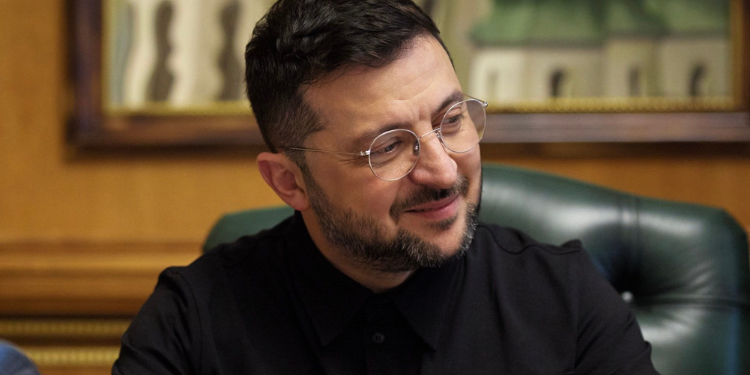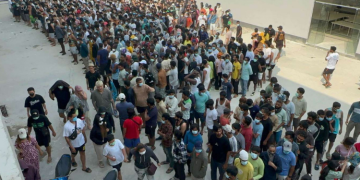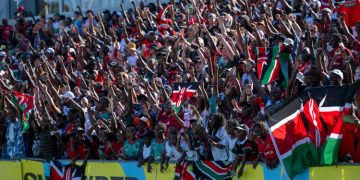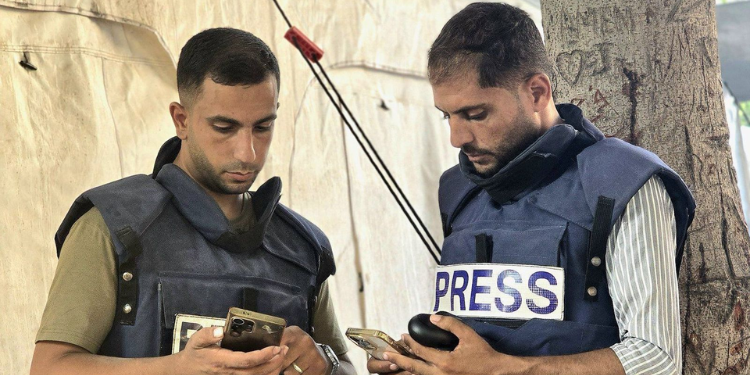Hamas killed about 1,200 people in Israel, mostly unarmed civilians, in its surprise attack on southern Israel on October 7, 2023. Using Gaza health ministry statistics, the UN says more than 62,000 people have subsequently been killed in Gaza since Israel launched its military campaign against Hamas. An additional 1,000 Palestinians have been killed in the West Bank.
The statistics do not distinguish between combatants and civilians. But Israeli government officials have consistently said their military works hard to keep civilian harm to a minimum. As Ophir Falk, a foreign policy adviser to Israeli Prime Minister Benjamin Netanyahu, said in 2024: “Any civilian casualty is a tragedy for sure. Israel seeks to minimise the civilian casualties, while Hamas seeks to maximise them.”
Falk added: “We seek to minimise them for two main reasons … one, it’s the right thing to do. We’re the only Jewish country on Earth, and that is our policy to minimise civilian casualties. And the other reason is because it’s effective.” By effective, he means that hurting civilians can backfire. It can lead to a loss of domestic and international support for the war, as well as increased Palestinian resistance.
Israeli media outlets have also detailed the “extensive measures” the Israel Defense Forces (IDF) says it takes to keep civilians in Gaza safe. And they have repeated claims such as: “What the IDF has been doing in Gaza in this war is unprecedented in urban warfare, both in pace and caution.”
Israeli officials dispute the numbers of Palestinian civilians reported to have been killed in Gaza. Some have even claimed that the Gaza health ministry and UN have “lied” about the number of Palestinian civilians killed in the war.
But figures from a classified Israeli military intelligence database, reported recently by the Guardian, indicate that 83% of the Palestinians killed by Israeli forces in Gaza as of May have been civilians.
Preventing Civilian Harm
The protection of civilians in war has not always been taken for granted. The US only began to emphasise the minimisation of inadvertent harm to civilians, or “collateral damage”, after the Vietnam War ended in 1975.
The inadvertent killing of civilians and massacres such as My Lai, where as many as 500 unarmed Vietnamese villagers were killed by US soldiers in 1968, were widely condemned. Precautions to avoid civilian harm, known as civilian casualty or civilian harm mitigation, have been gradually integrated into US military operations since then.
The US developed a practice of making pre-strike estimates of possible civilian harm – collateral damage estimates – in the 1990s. This was refined during the post-9/11 wars.
If civilian harm is estimated to be above a certain threshold, and disproportionate to the expected military advantage of an operation, the US military might change how it engages or not strike at all. US methods to minimise civilian casualties have been consistently updated, as recently as August 2022 and July 2024.
These precautions have not always been adhered to. They have also sometimes been relaxed when the US believes doing so is justified. But when they have been followed, the rate of civilian killing has been reduced.
The impetus for the US military to develop these programmes was not only to minimise harm to its own reputation and a desire to follow the laws of war. The point was also to avoid creating more militants by killing civilians.
The 2007 US Counterinsurgency Field Manual underscores the importance of avoiding civilian harm. It states: “an operation that kills five insurgents is counterproductive if collateral damage leads to the recruitment of 50 more insurgents.”
It was equally important to convince observers that every effort was being made to ensure civilians were protected. As a 2006 study by US-based thinktank RAND corporation, paid for by the US air force, said:
By emphasizing the efforts that are being made to reduce civilian casualties (such as increased precision, smaller blast effects, improved target verification and so on), the Air Force and Department of Defense can help ensure that the US Congress and public have continued reason to trust that the US military is seeking new ways to reduce the prospects of civilian deaths in future military operations.
A demonstrated commitment to a philosophy of continuous improvement may be what is needed to ensure this trust in the future, and in the case of foreign audiences, to build trust in the first place.
Israel also began to use some of these methods. And it developed its own, context-specific practices in its wars with the Palestinians and other neighbours. In fact, Israel was a pioneer in the use of targeted drone strikes that it said were aimed at killing Palestinian militant leaders while avoiding civilian harm.
However, investigations have shown that Israel loosened its rules of engagement after the October 7 attacks. The New York Times reported that an order by military leadership authorised officers to risk killing up to 20 people in each airstrike targeting Hamas. In one extreme example from July 2024, a strike on Hamas military leader Mohammed Deif killed at least 90 civilians and injured around 300 more.
Israel Military Data
Israel’s own military data also now shows that Israeli officials have both overstated the number of militants they say have been killed and, by implication, the ratio of civilian to militant deaths.
Also Read: Top Hamas Security Commander Killed in Gaza Strike
Prior to the Guardian’s report, Israeli officials said the military had killed 17,000 to 18,000 Hamas combatants and other “terrorists”. They also implied that 50% of the total deaths in Gaza were Hamas or other combatants. Netanyahu simultaneously decried what he called “outrageous” claims of civilian casualty rates of up to 70%.
But Israel’s own numbers show the actual civilian casualty rate in Gaza is much higher than the figure Netanyahu calls outrageous. It is also high compared to other conflicts. Research by the Costs of War project, which I co-founded, show that the rate of civilian casualties in American wars in Iraq and Afghanistan were 68% and 26% respectively.
Civilians never deserve to be harmed through carelessness, inadvertence or deliberate targeting. Yet given the kind of war Israel is fighting – using large, indiscriminate weapons to destroy buildings and failing to distinguish between combatant and noncombatant – it has unsurprisingly produced high civilian casualty rates.![]()
Neta Crawford, Montague Burton Chair in International Relations, University of Oxford
This article is republished from The Conversation under a Creative Commons license. Read the original article.
Follow our WhatsApp Channel and X Account for real-time news updates.

Photograph: Mohammed Ibrahim/Unsplash










































































